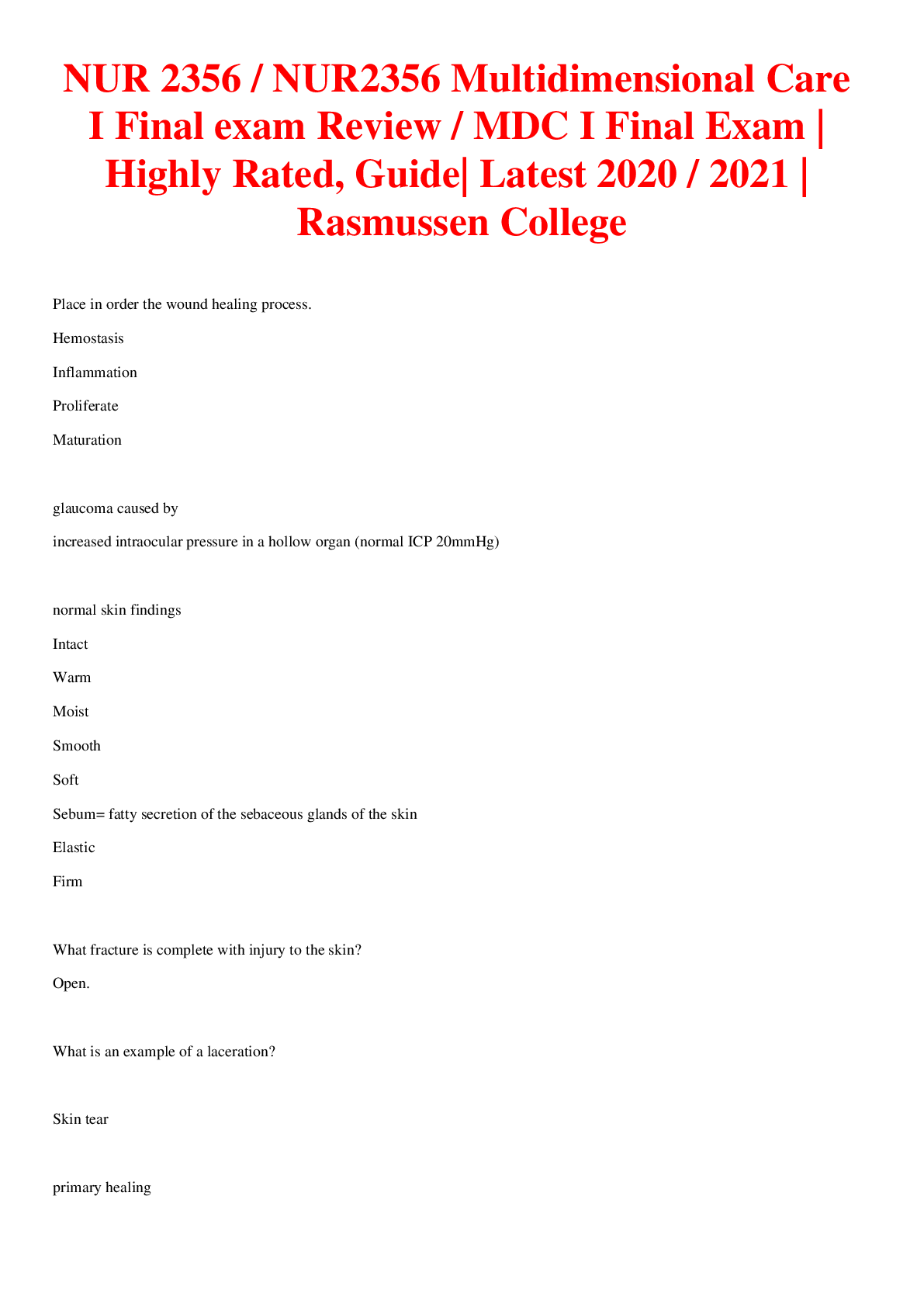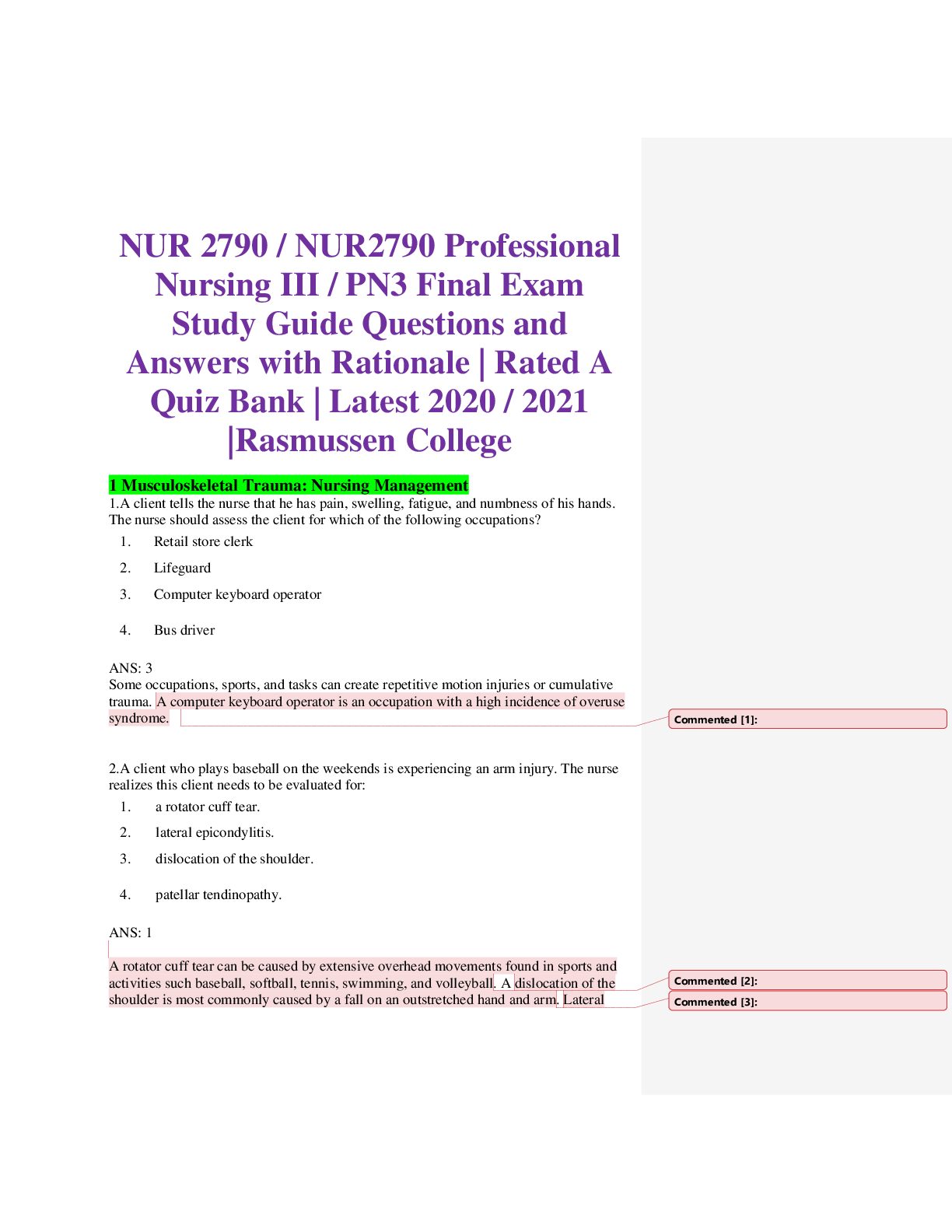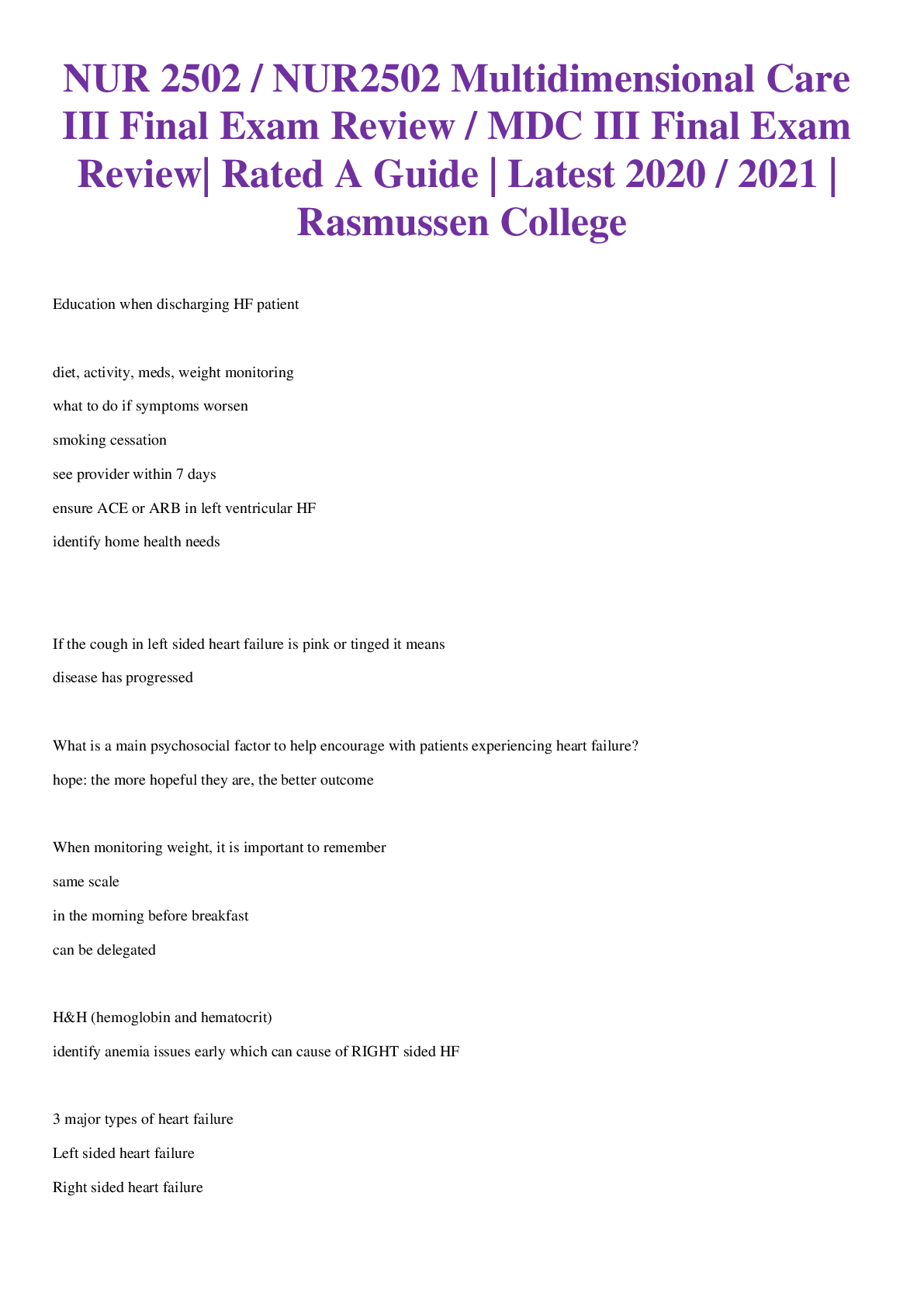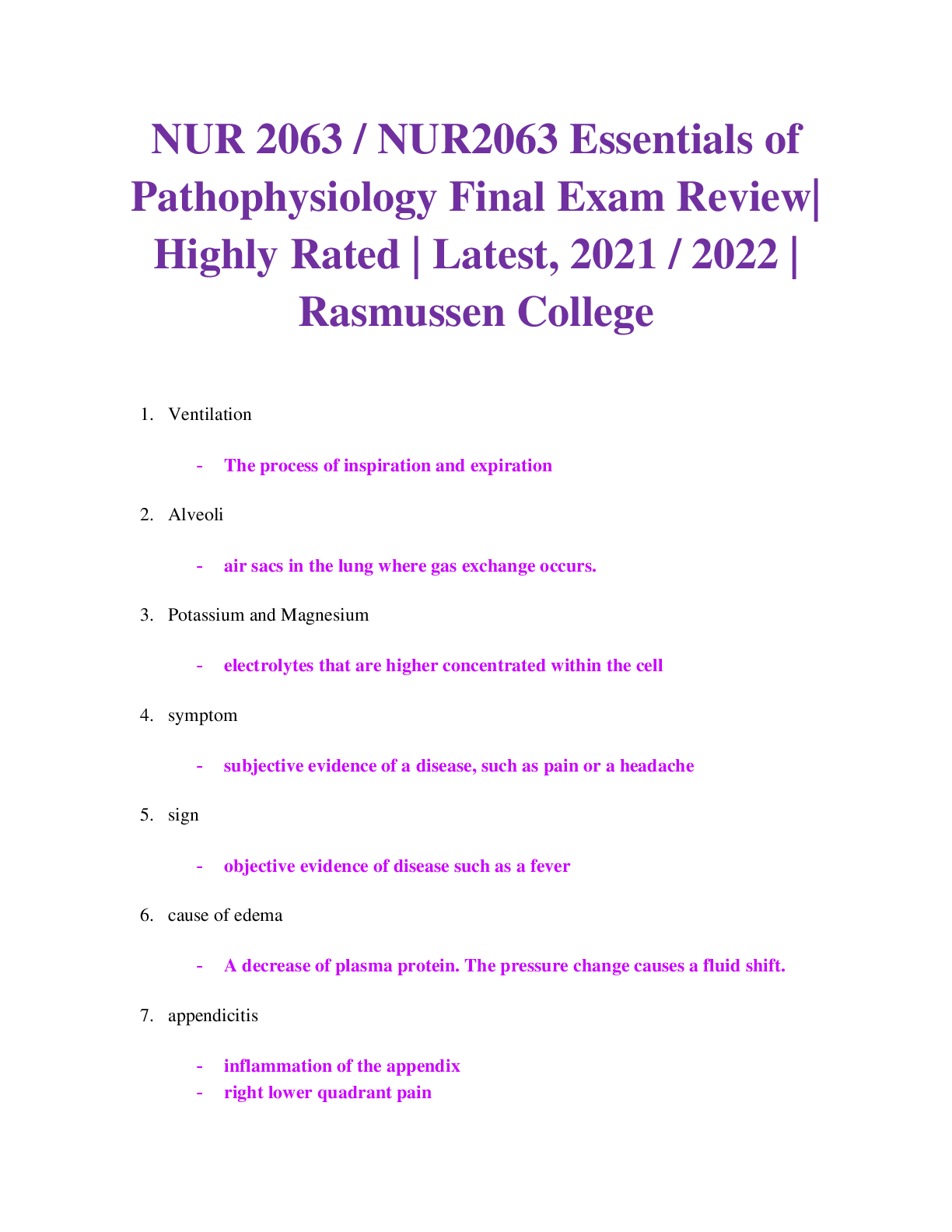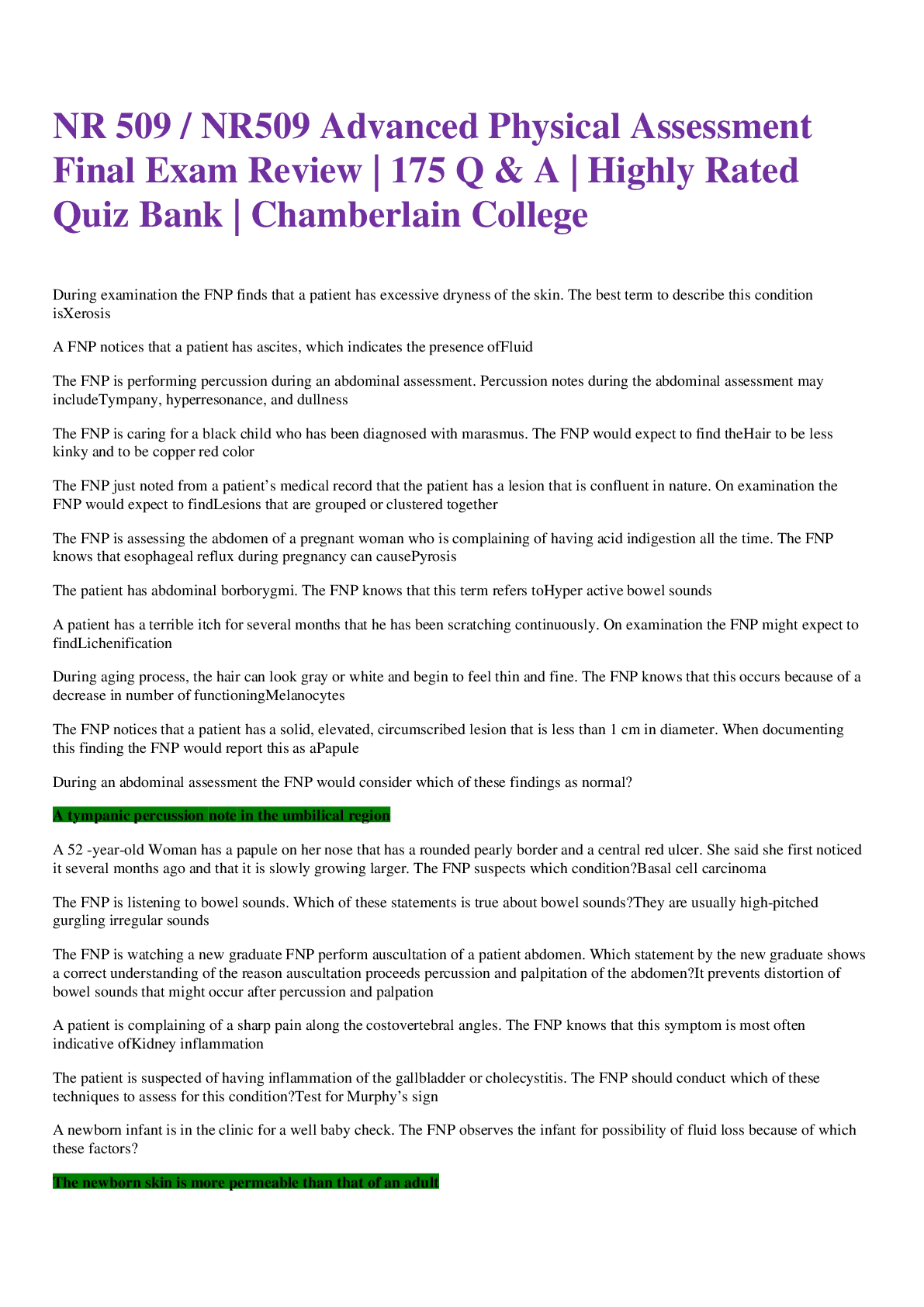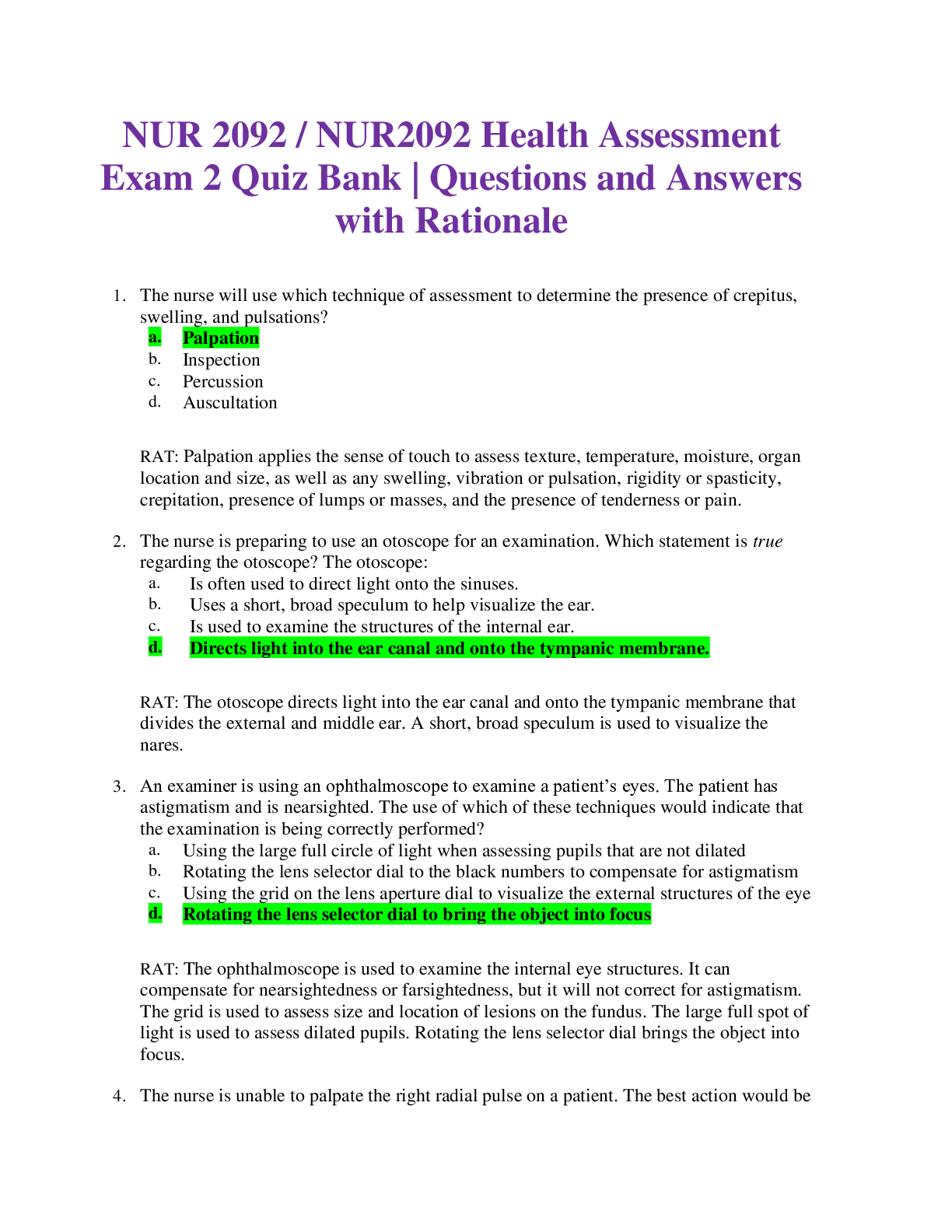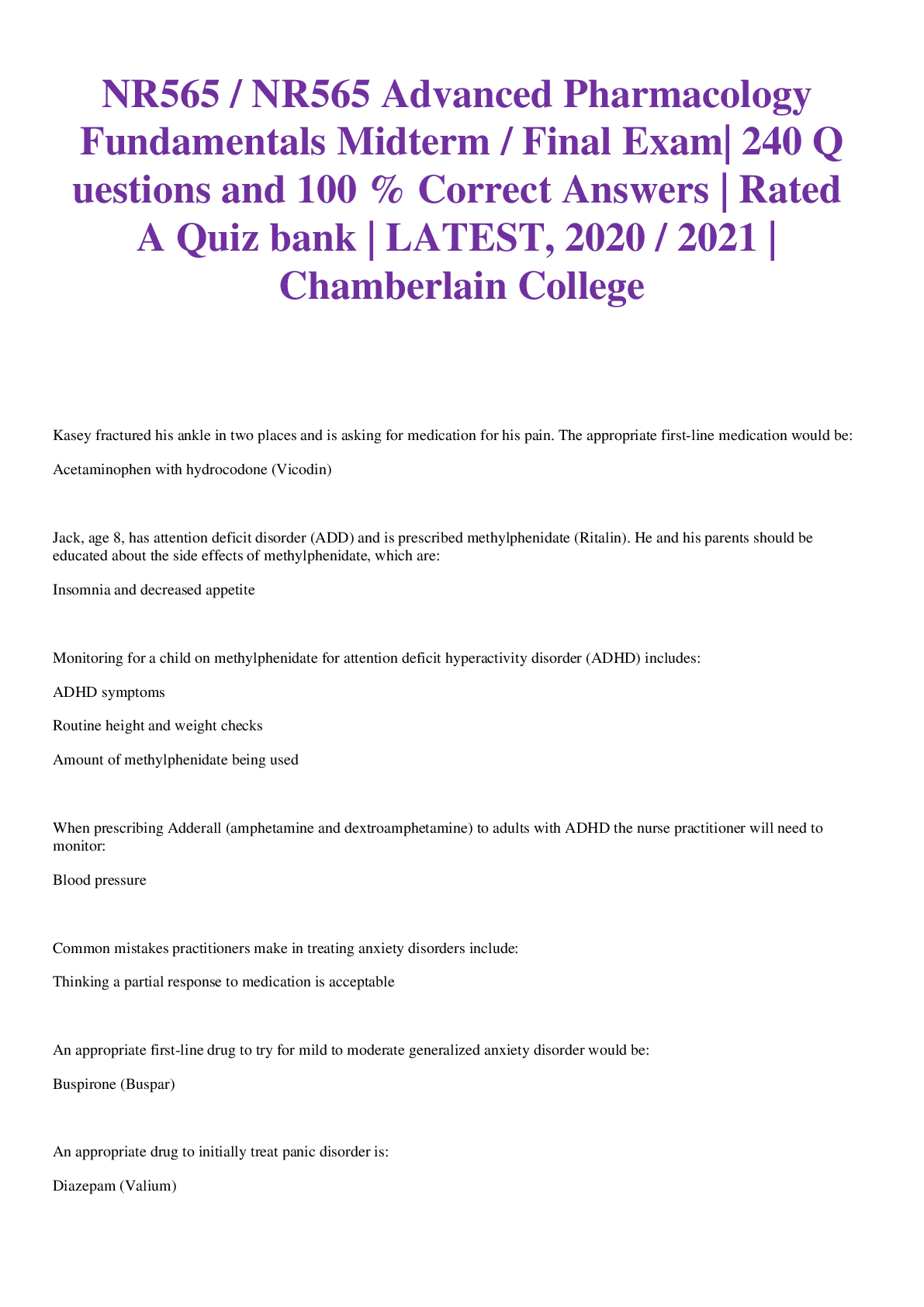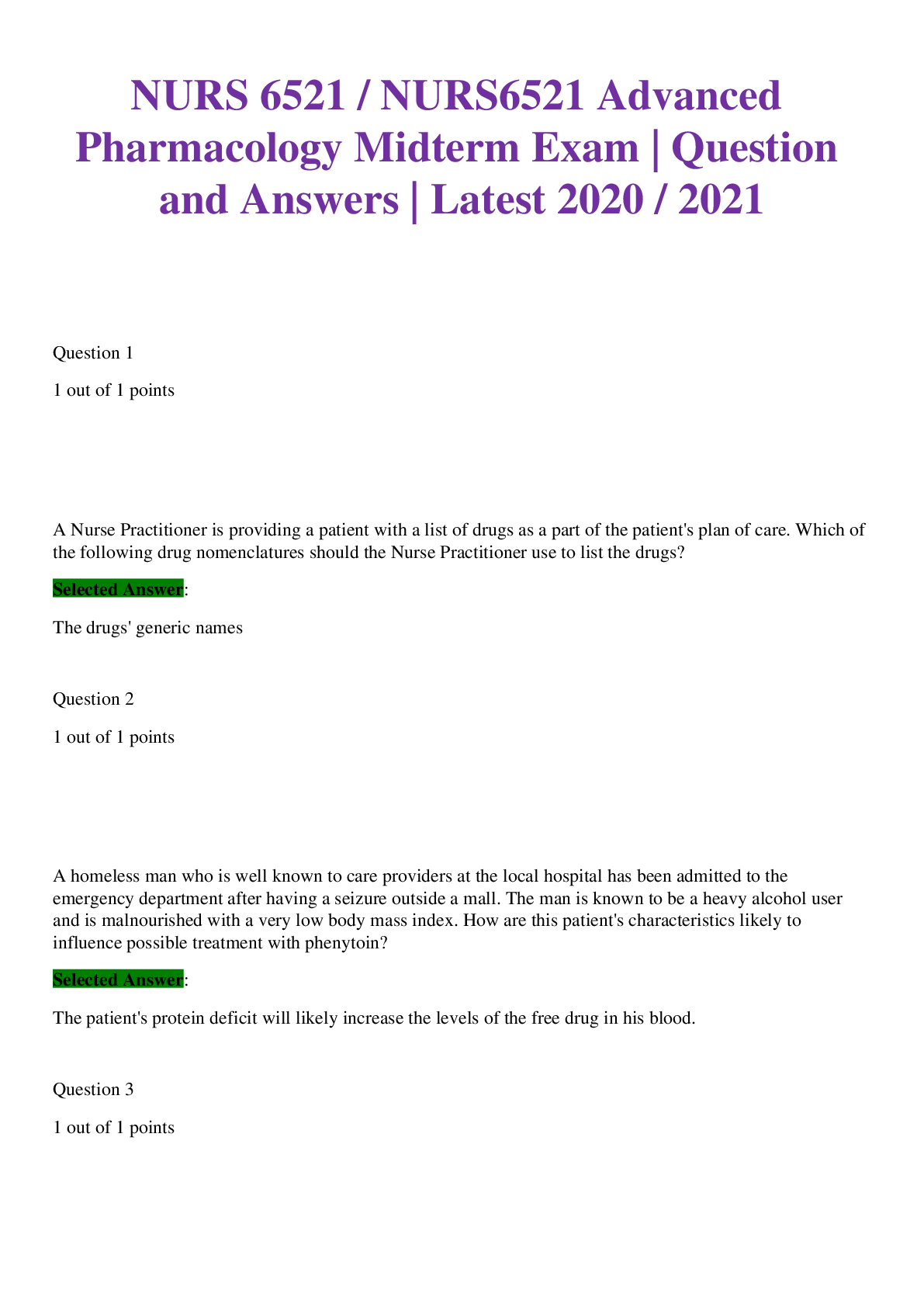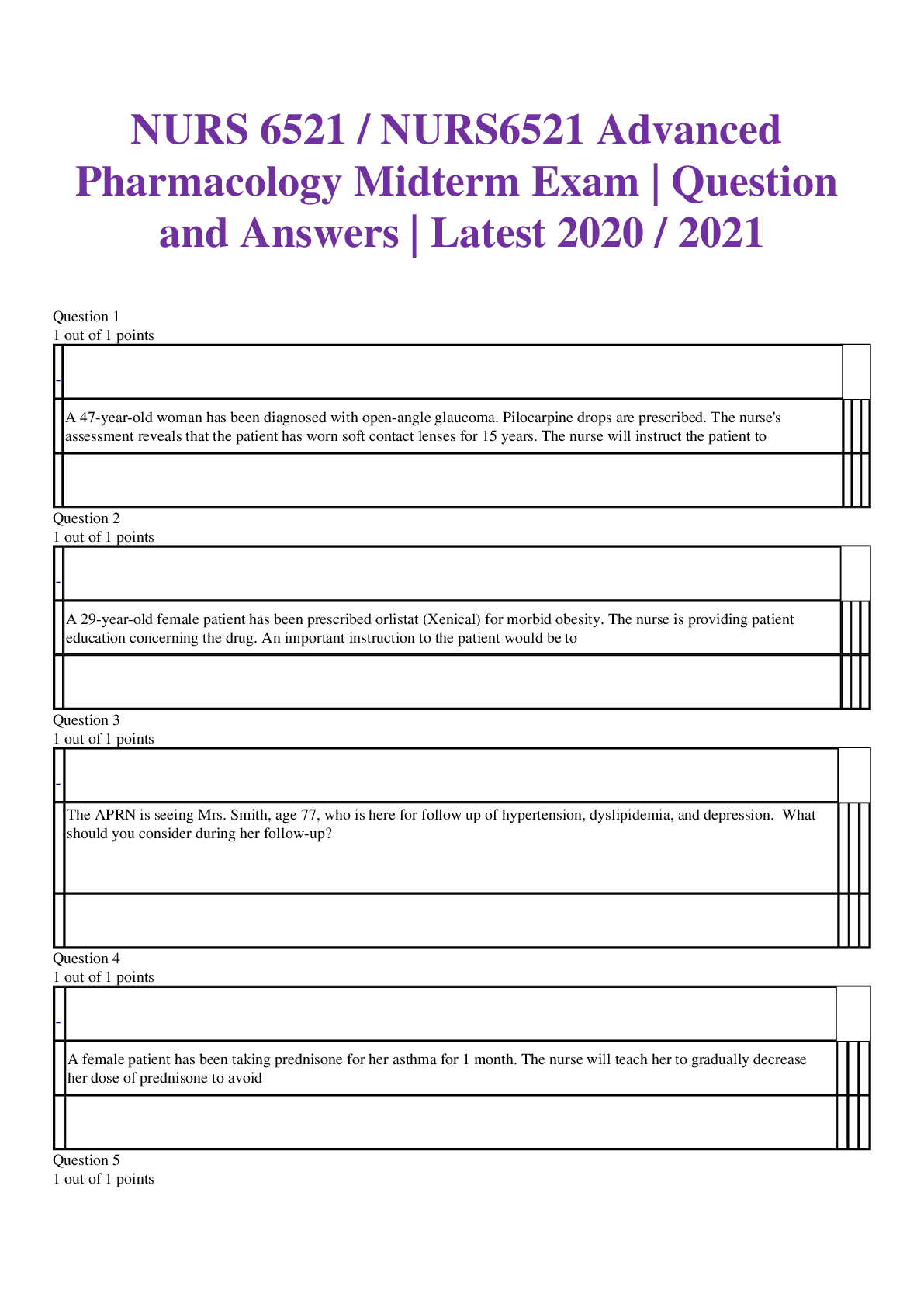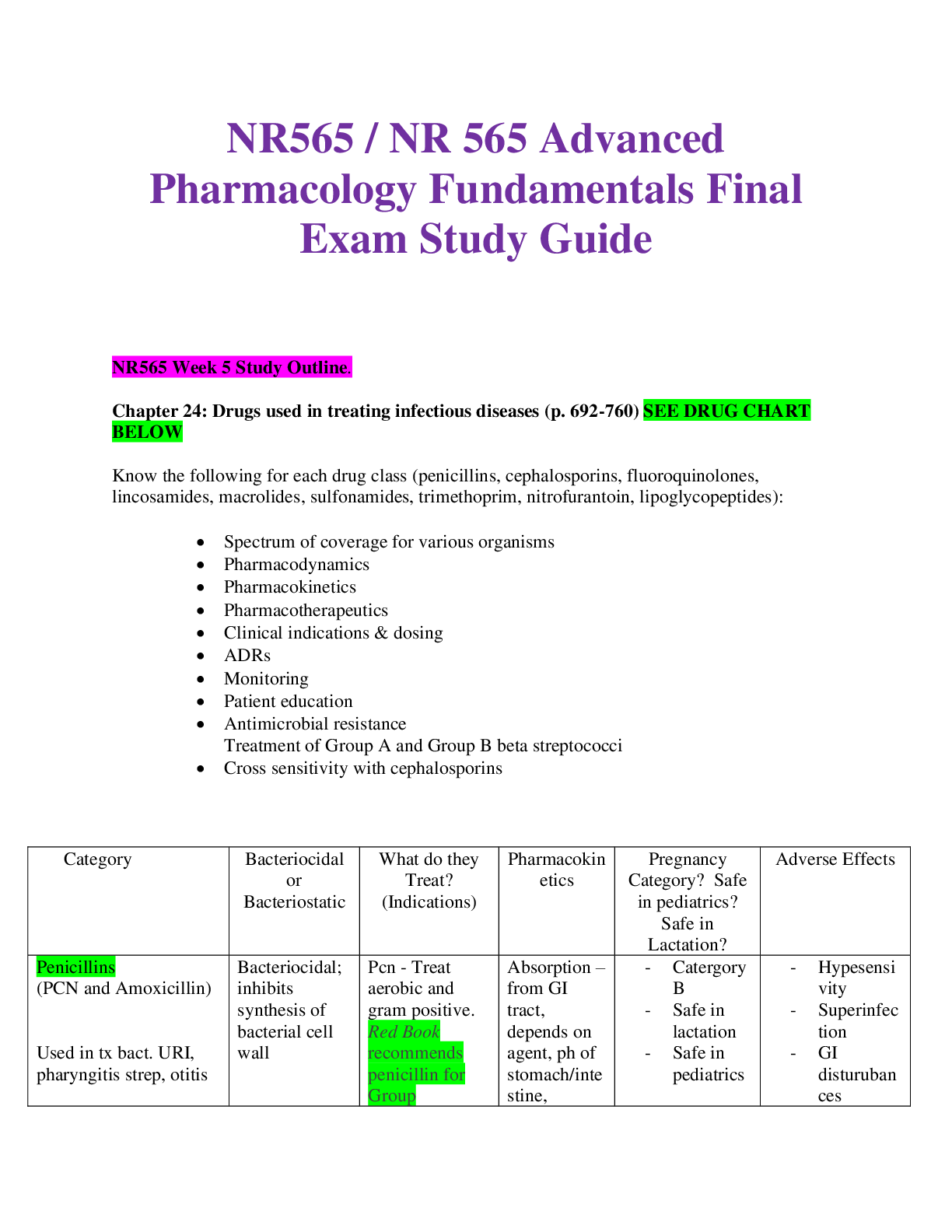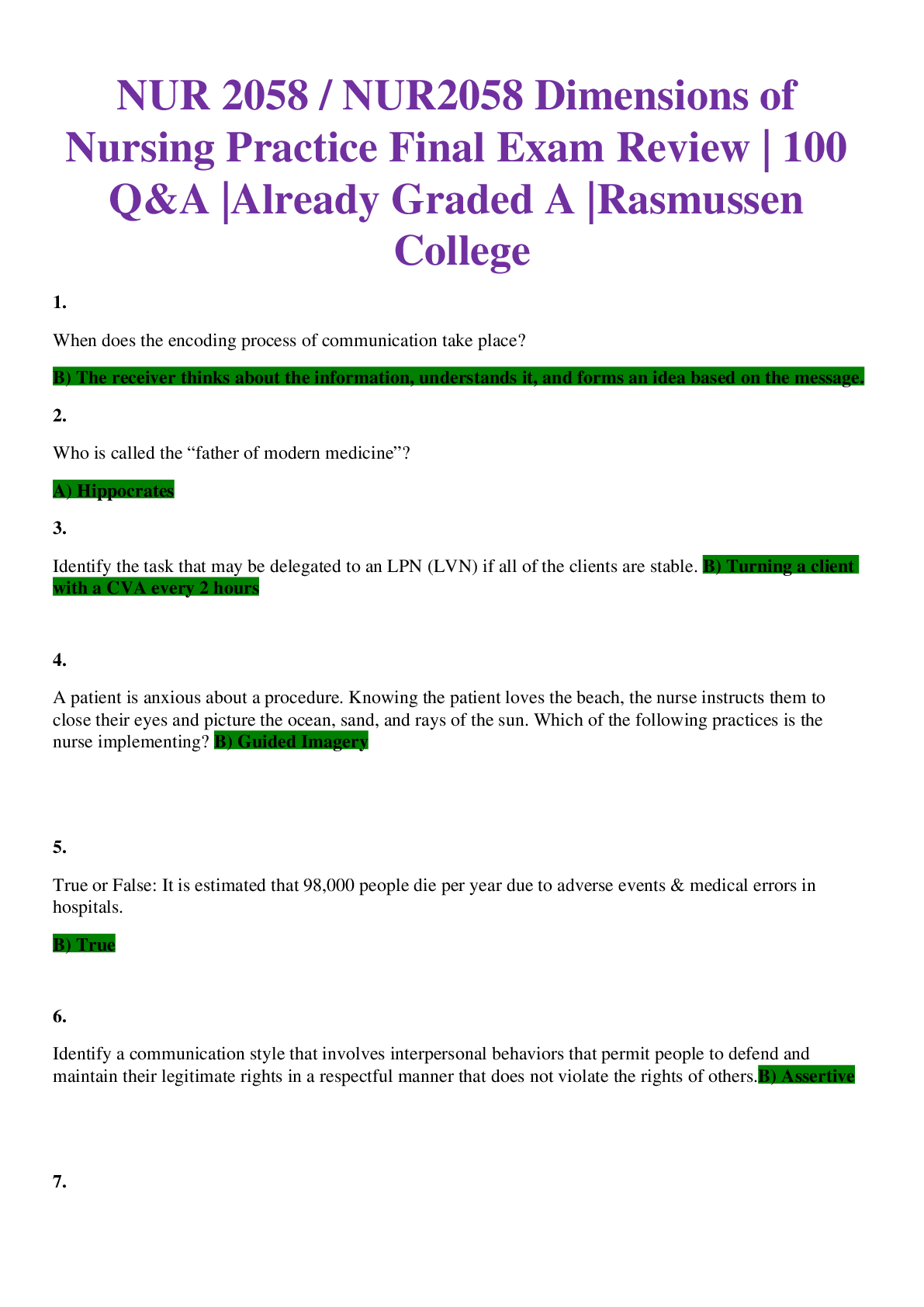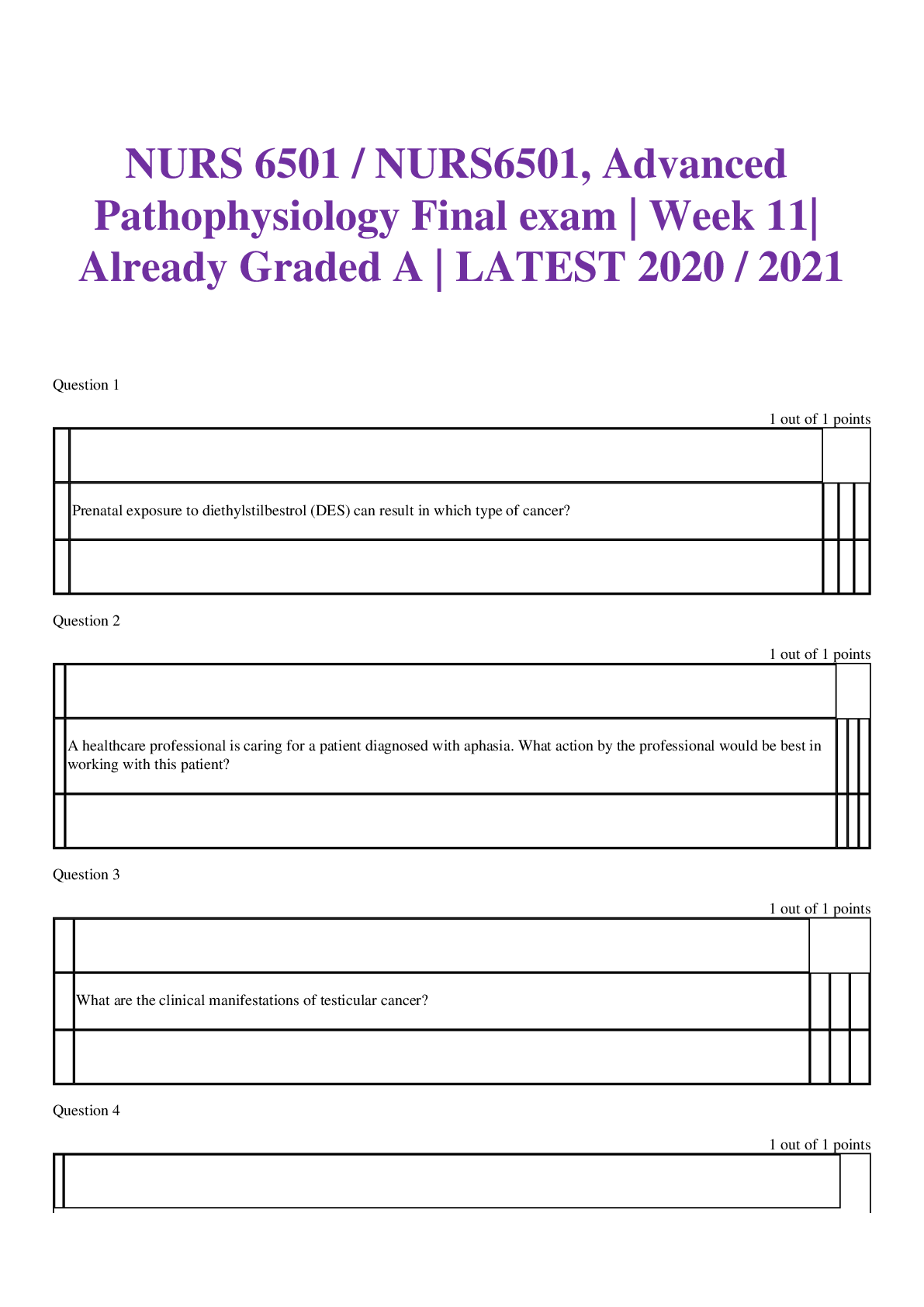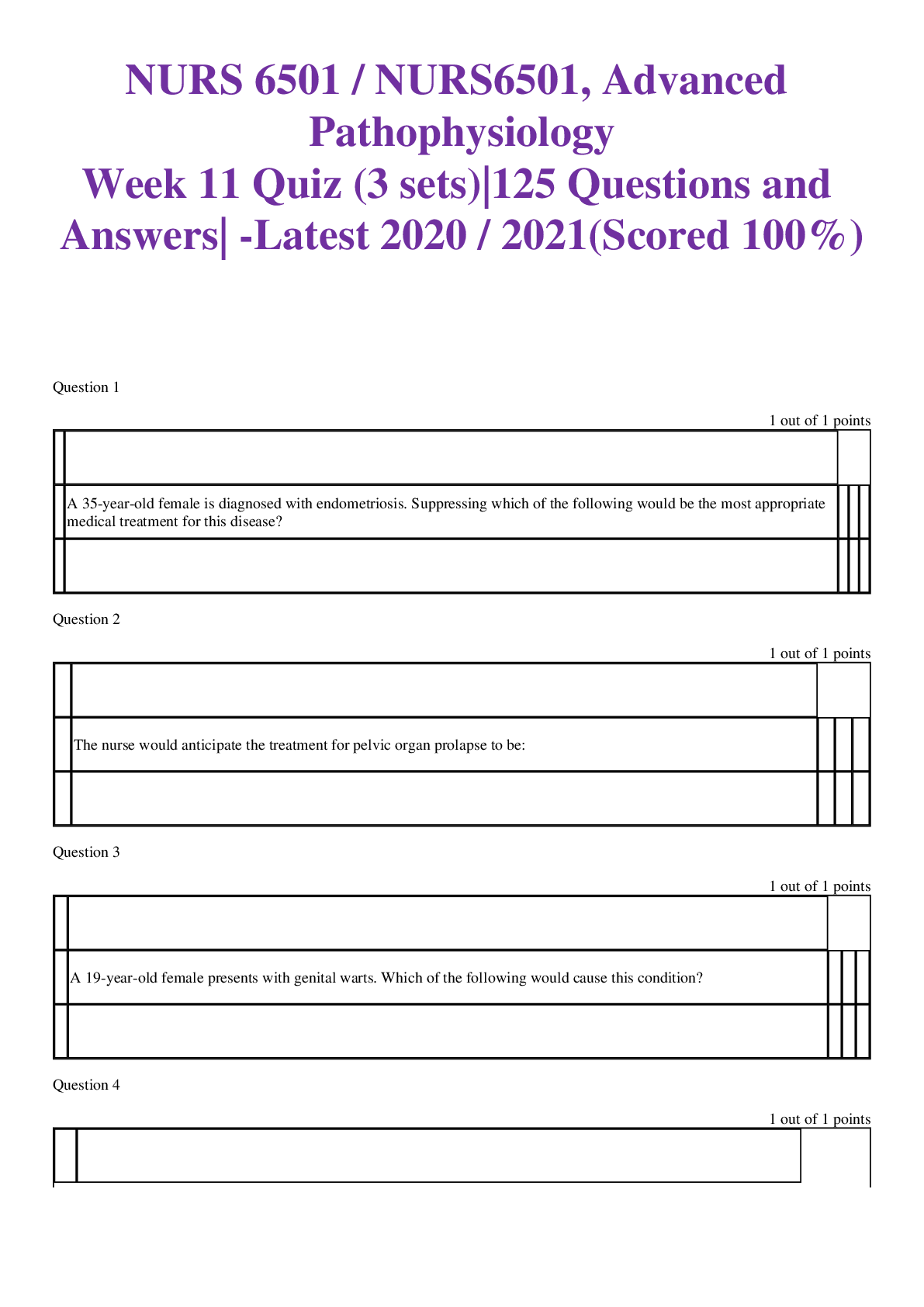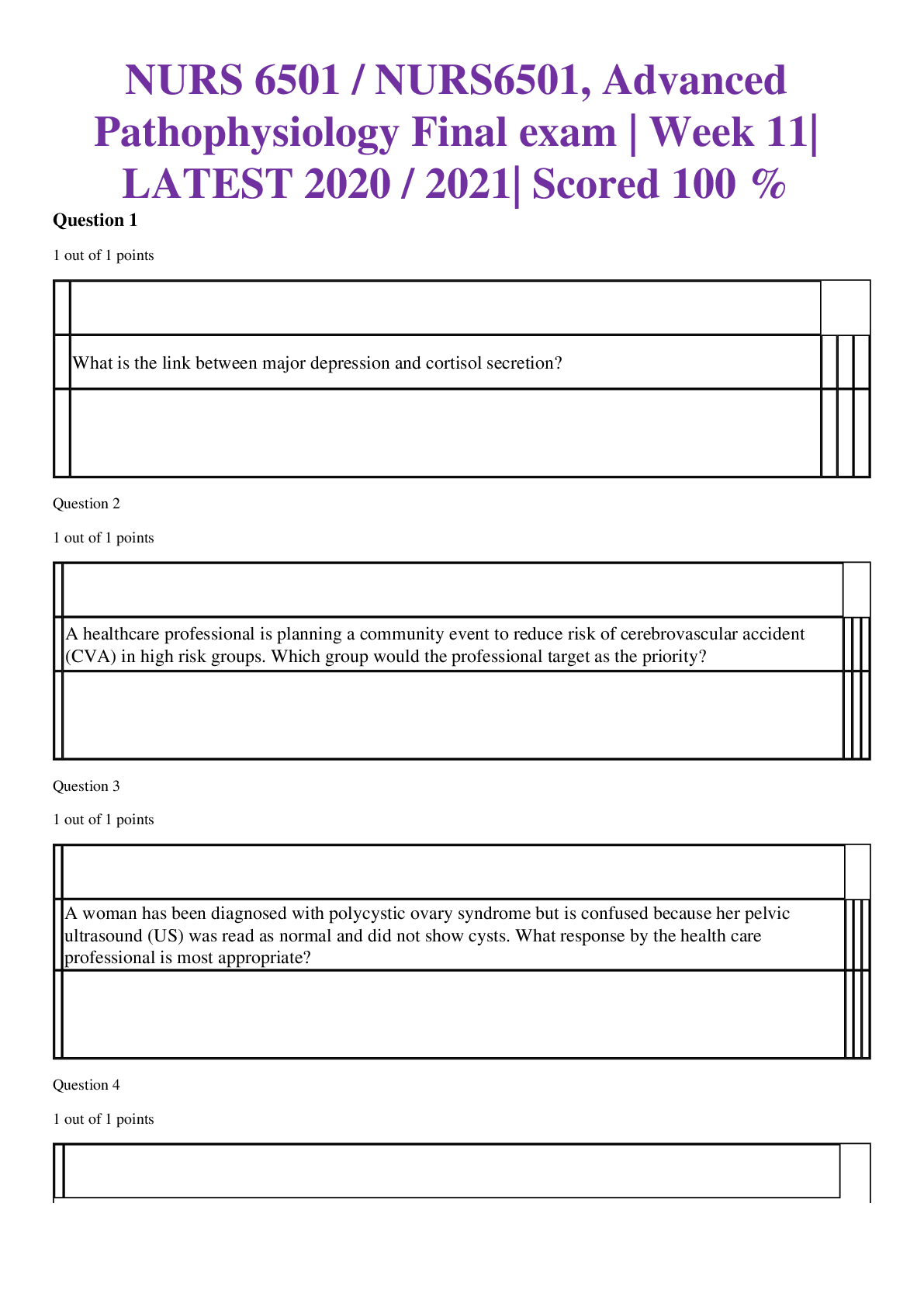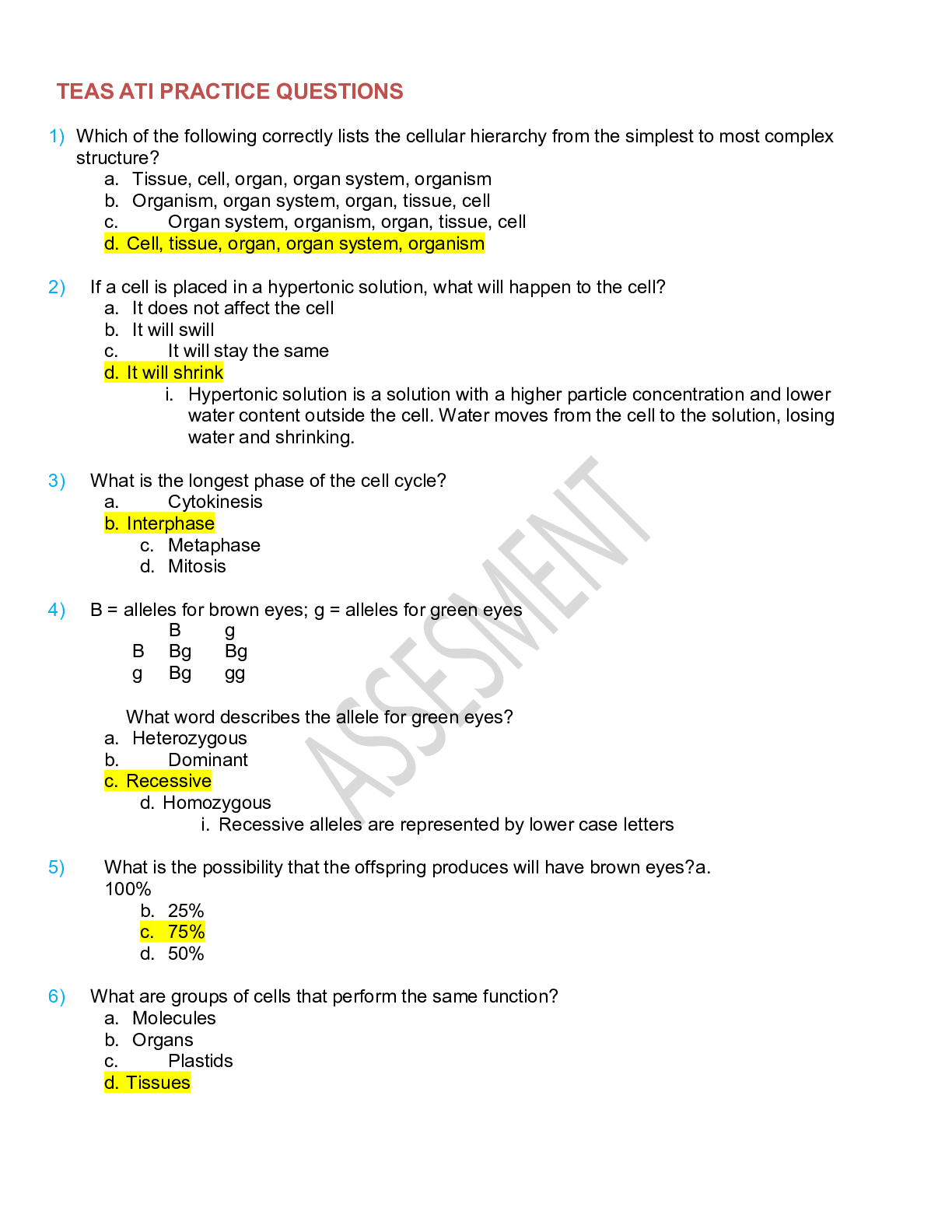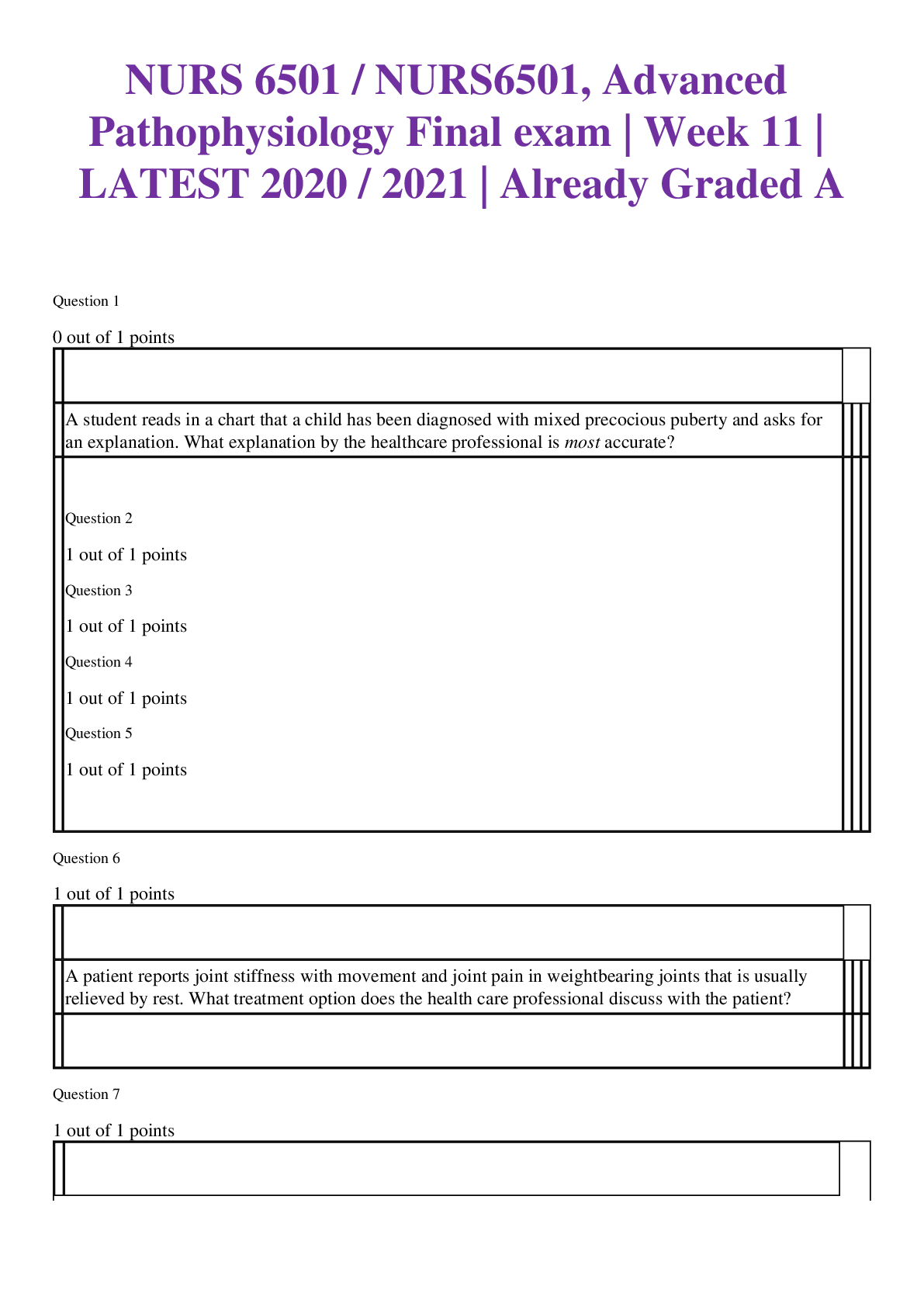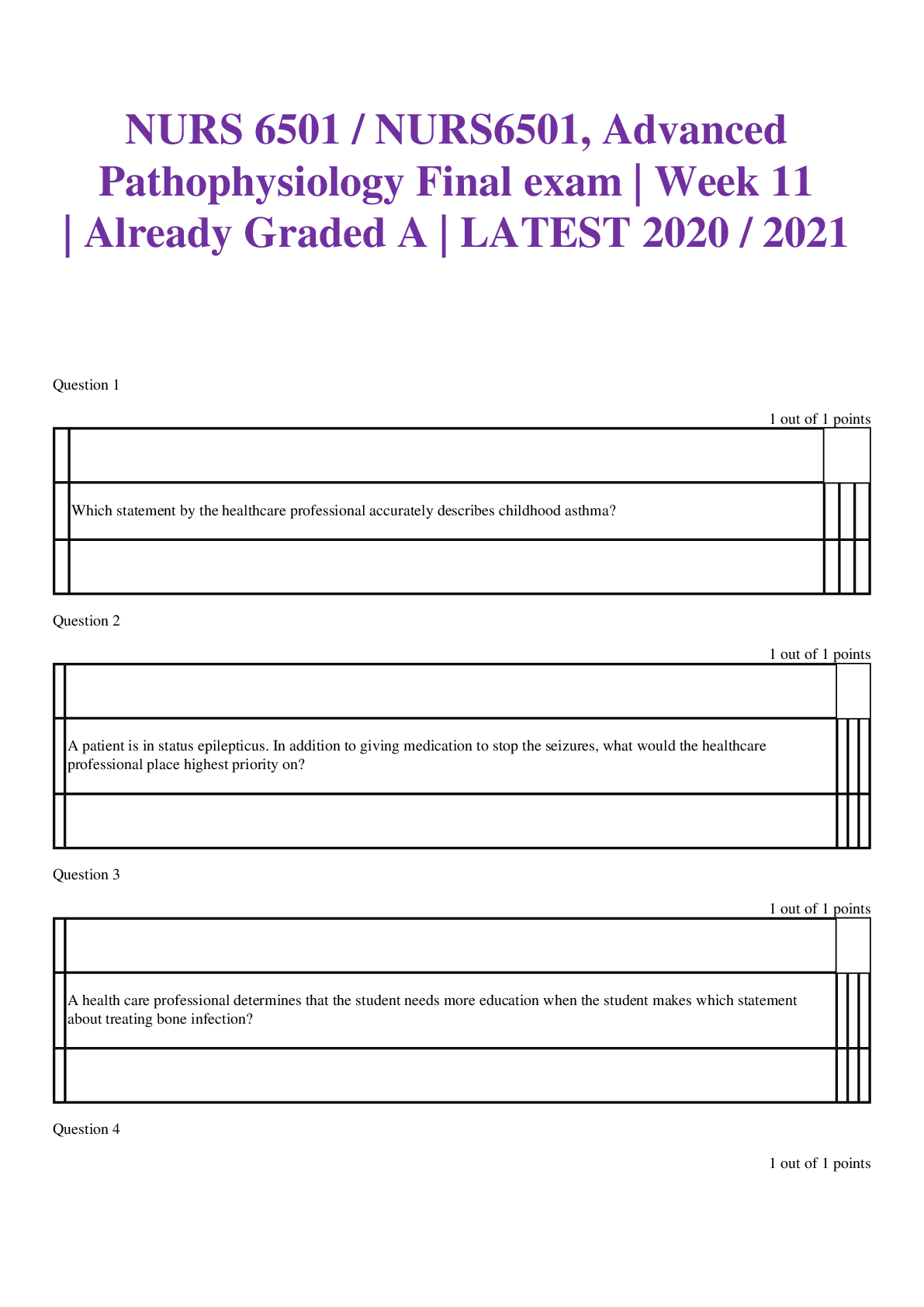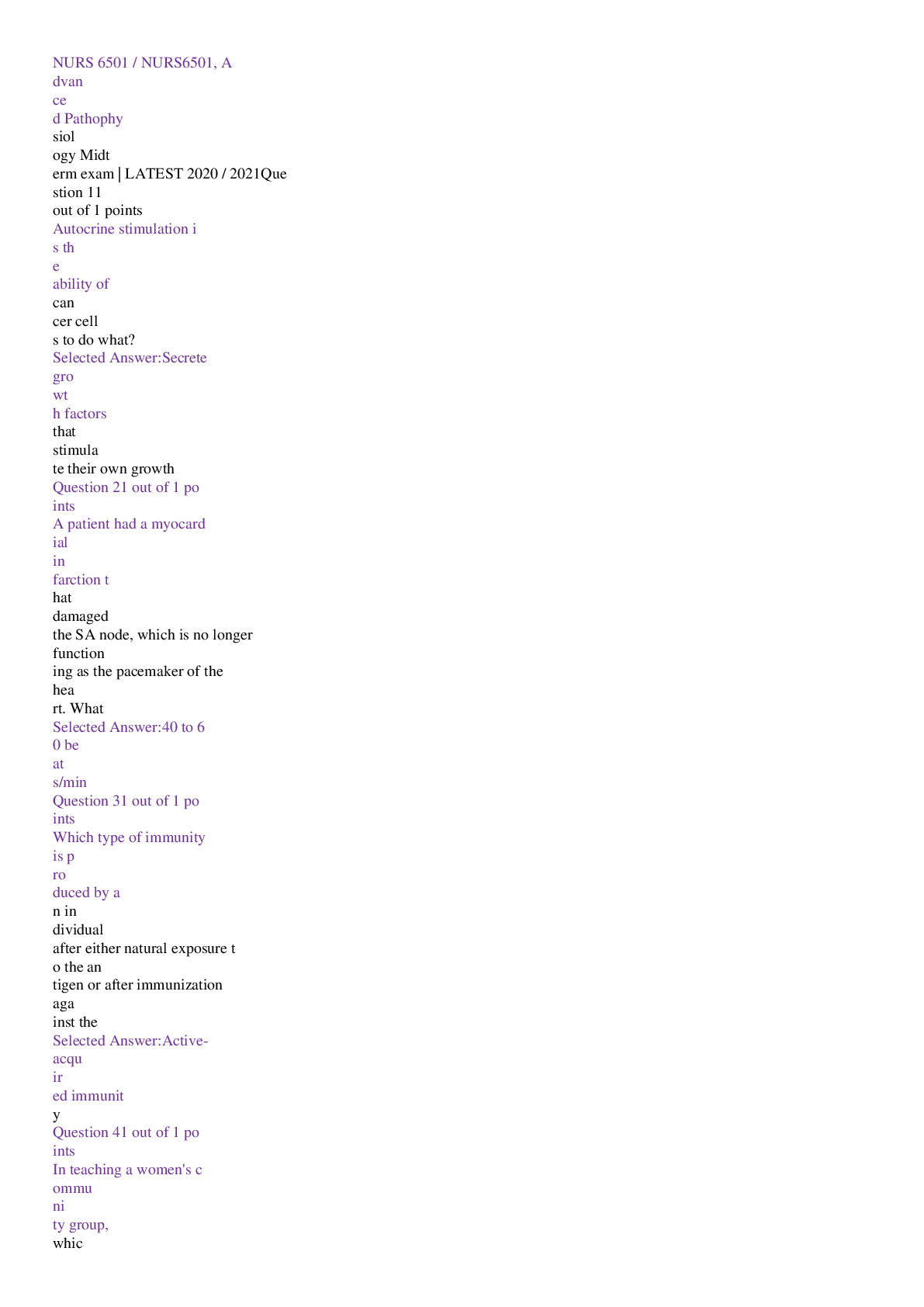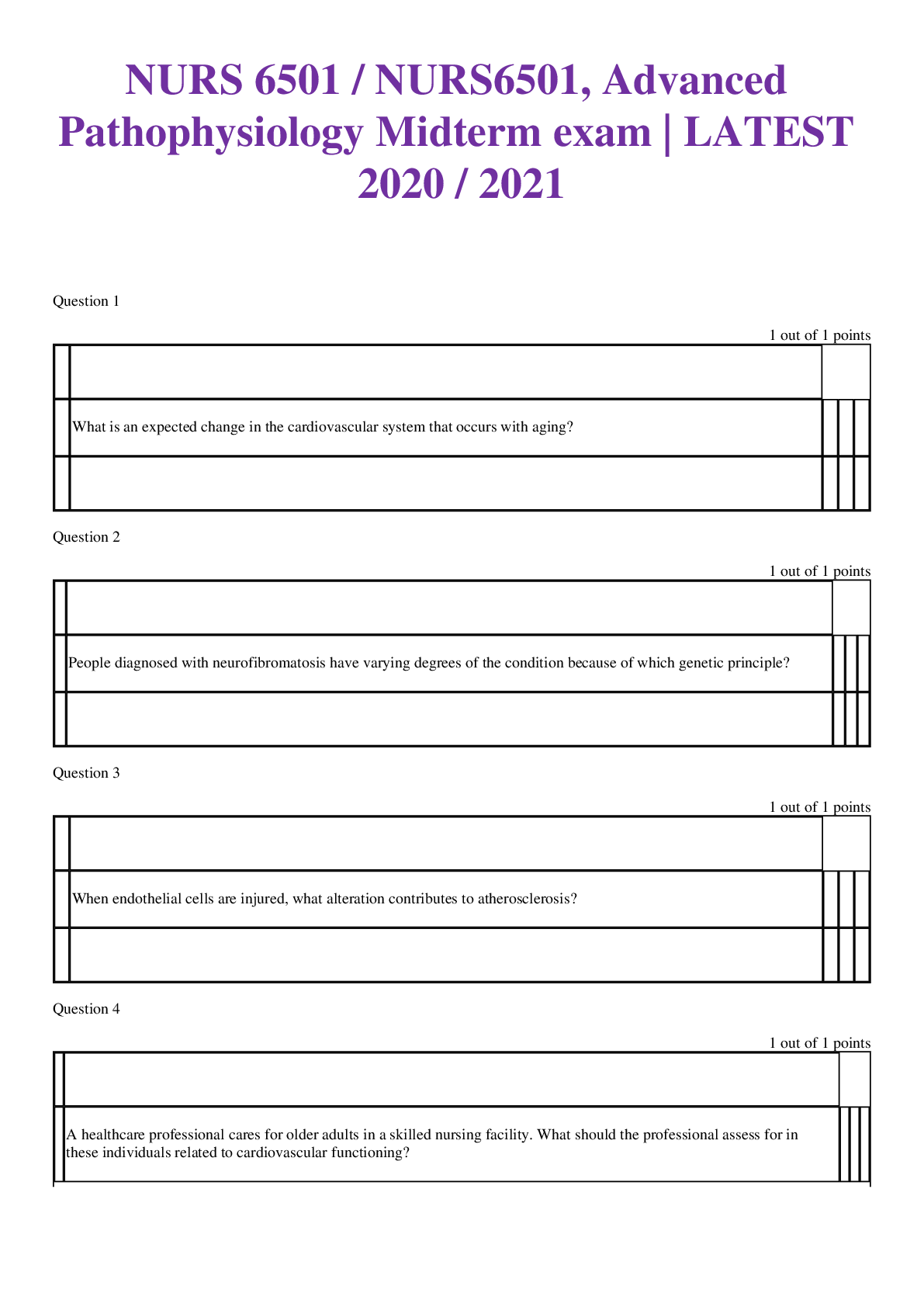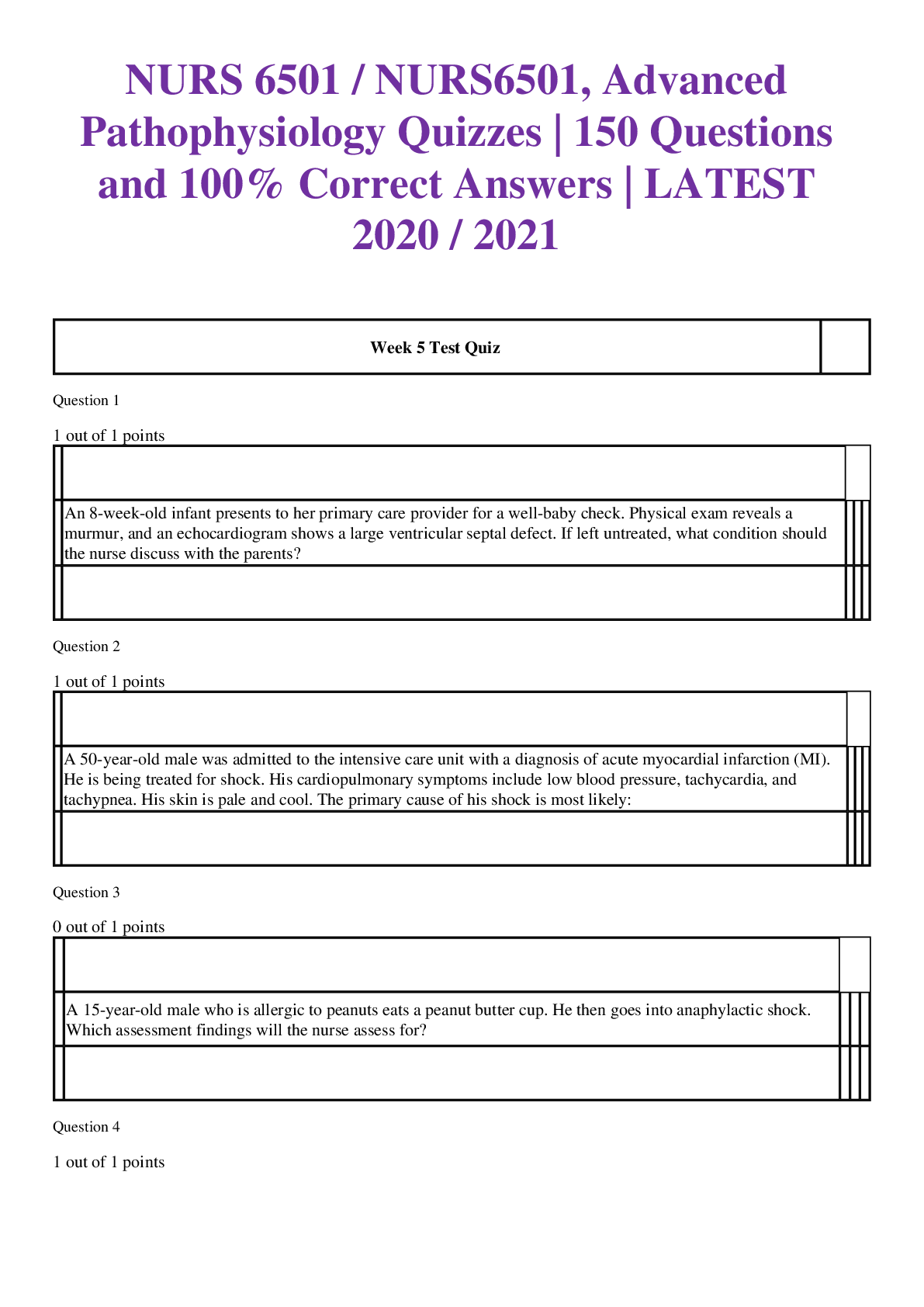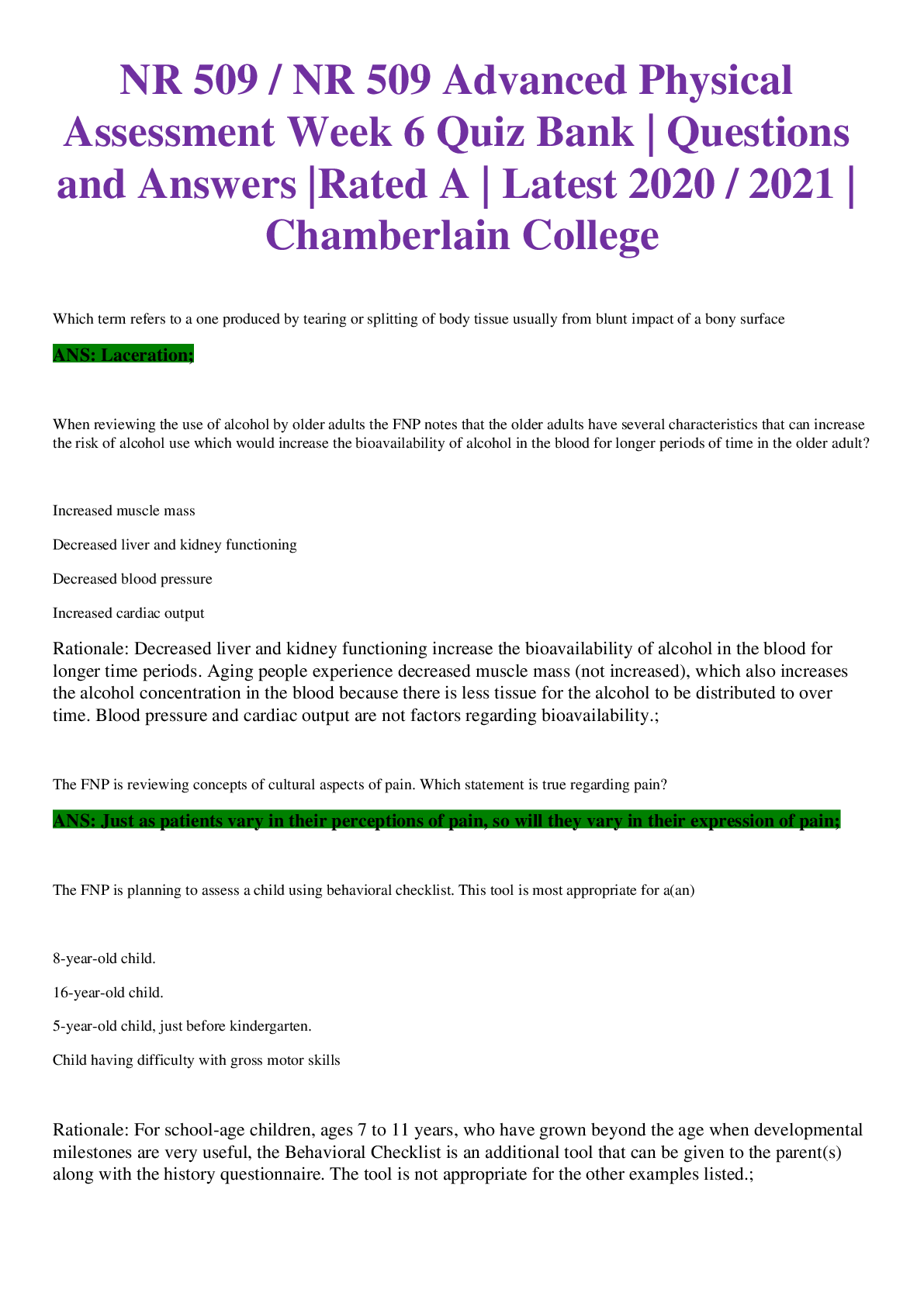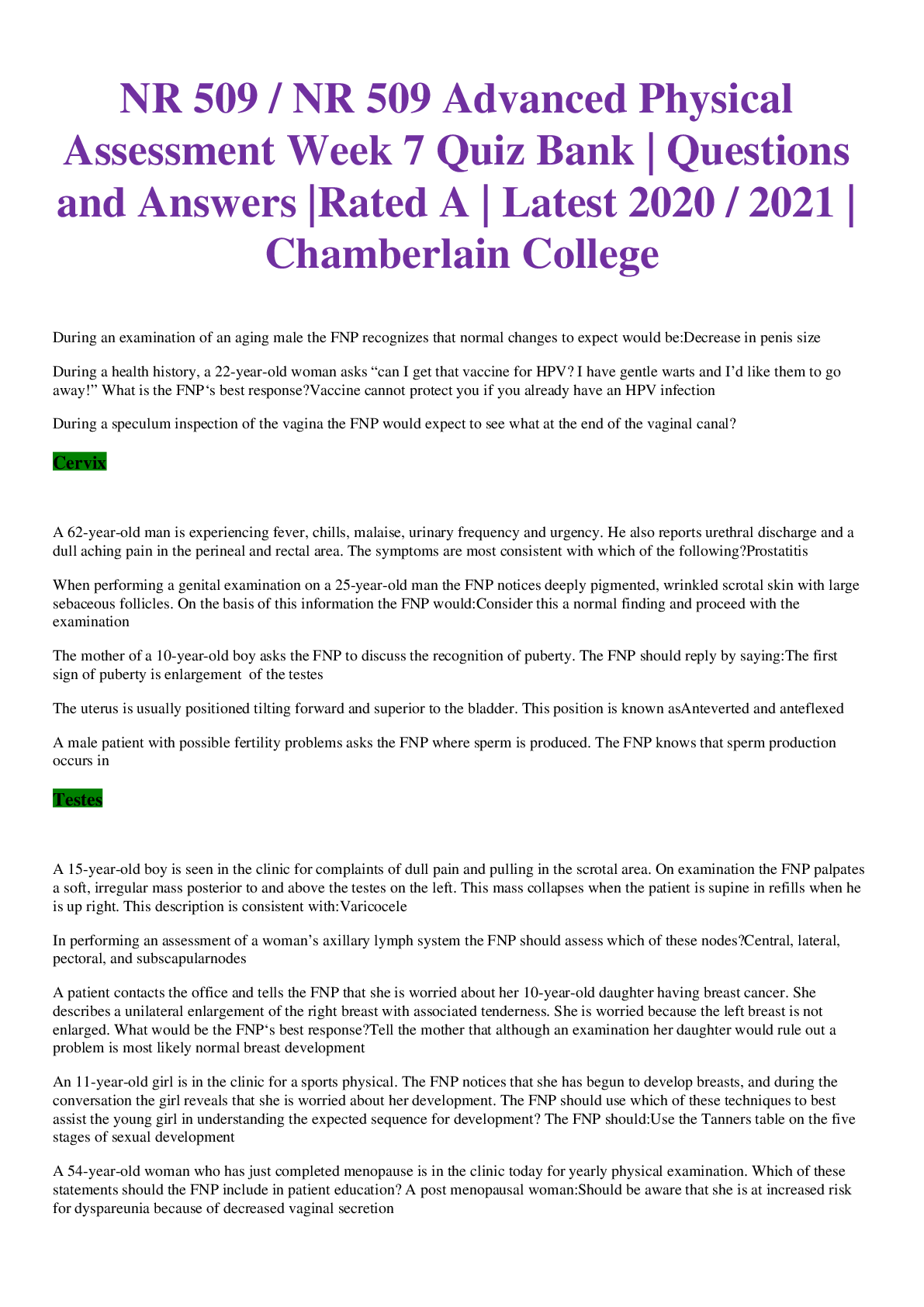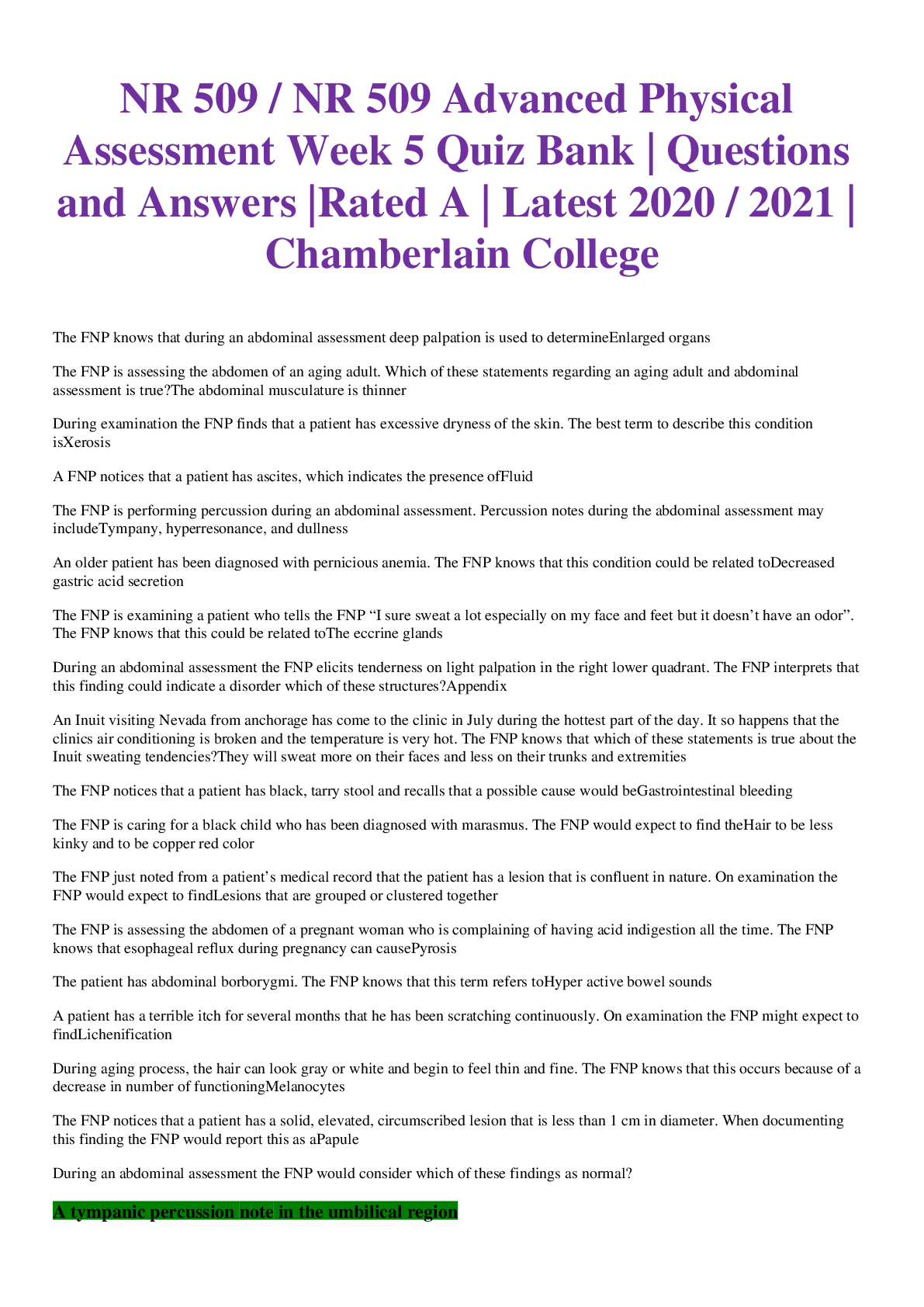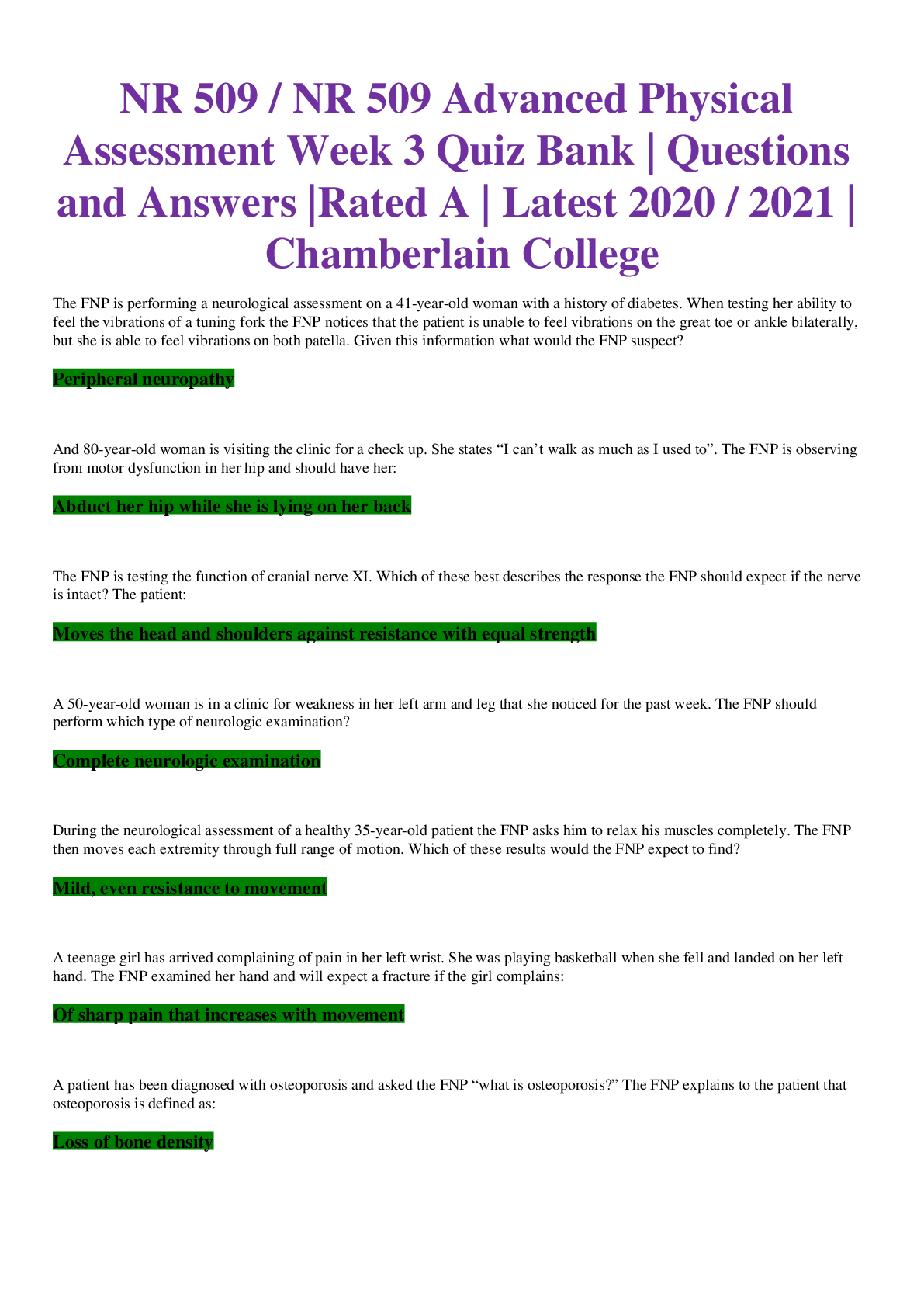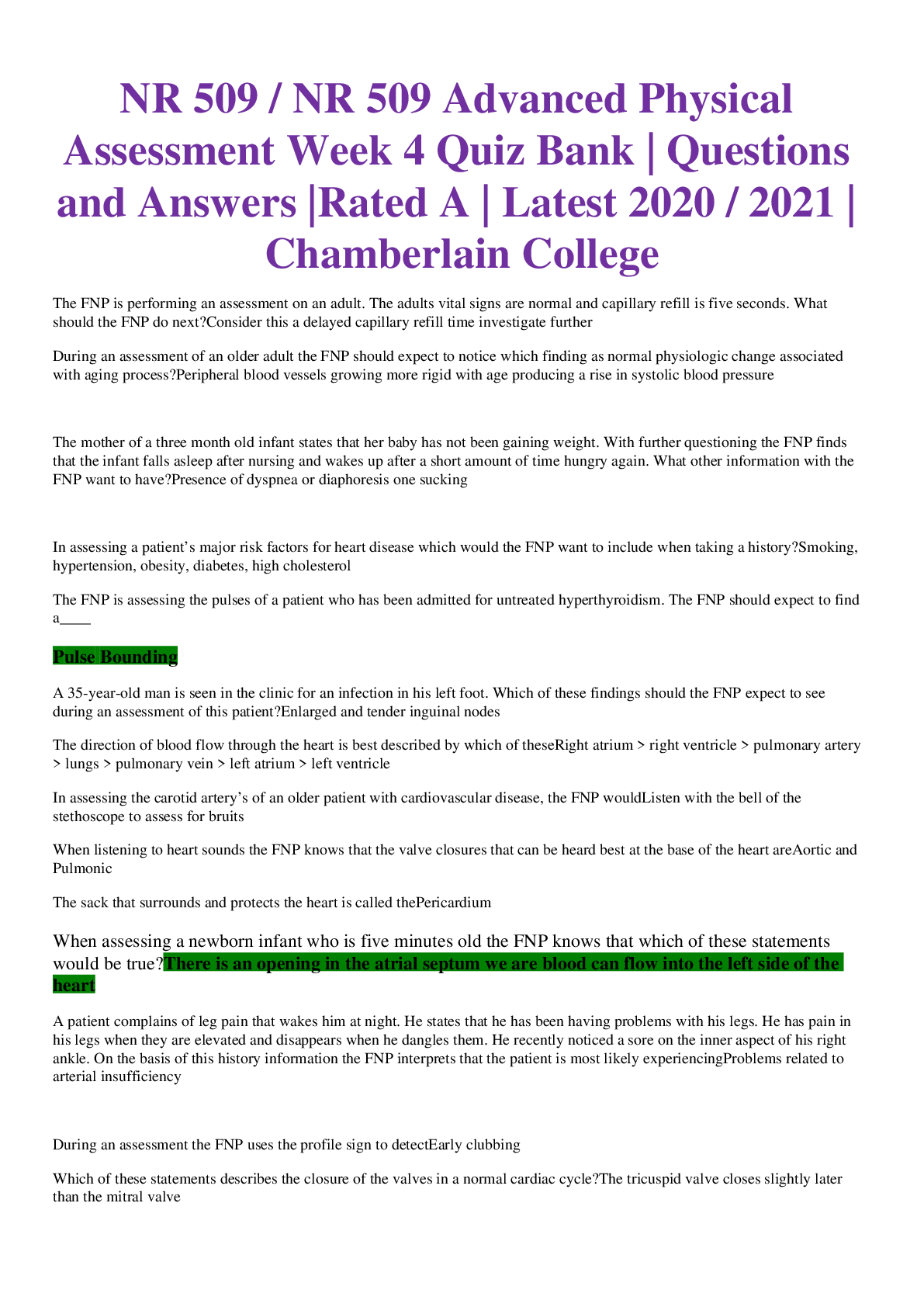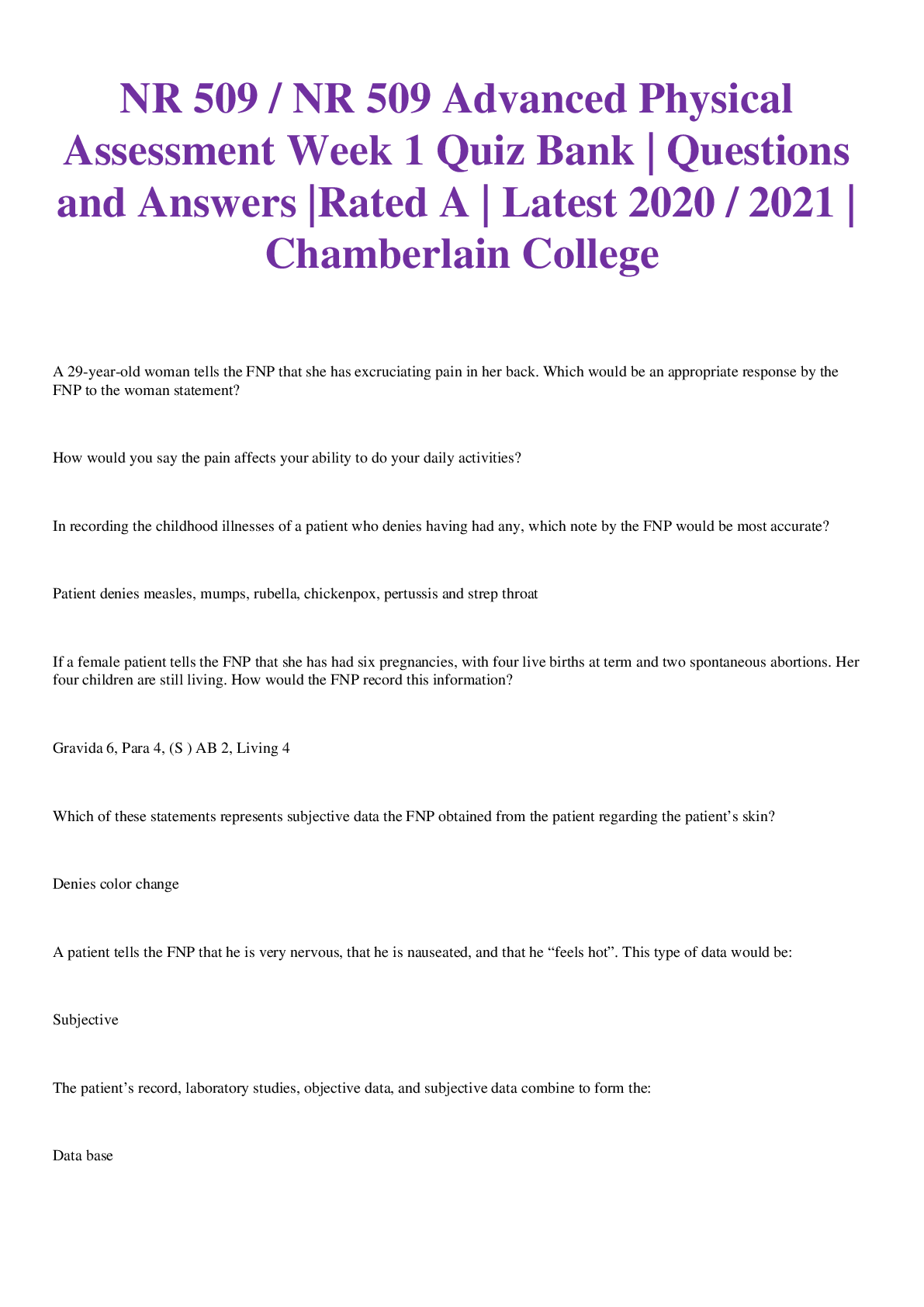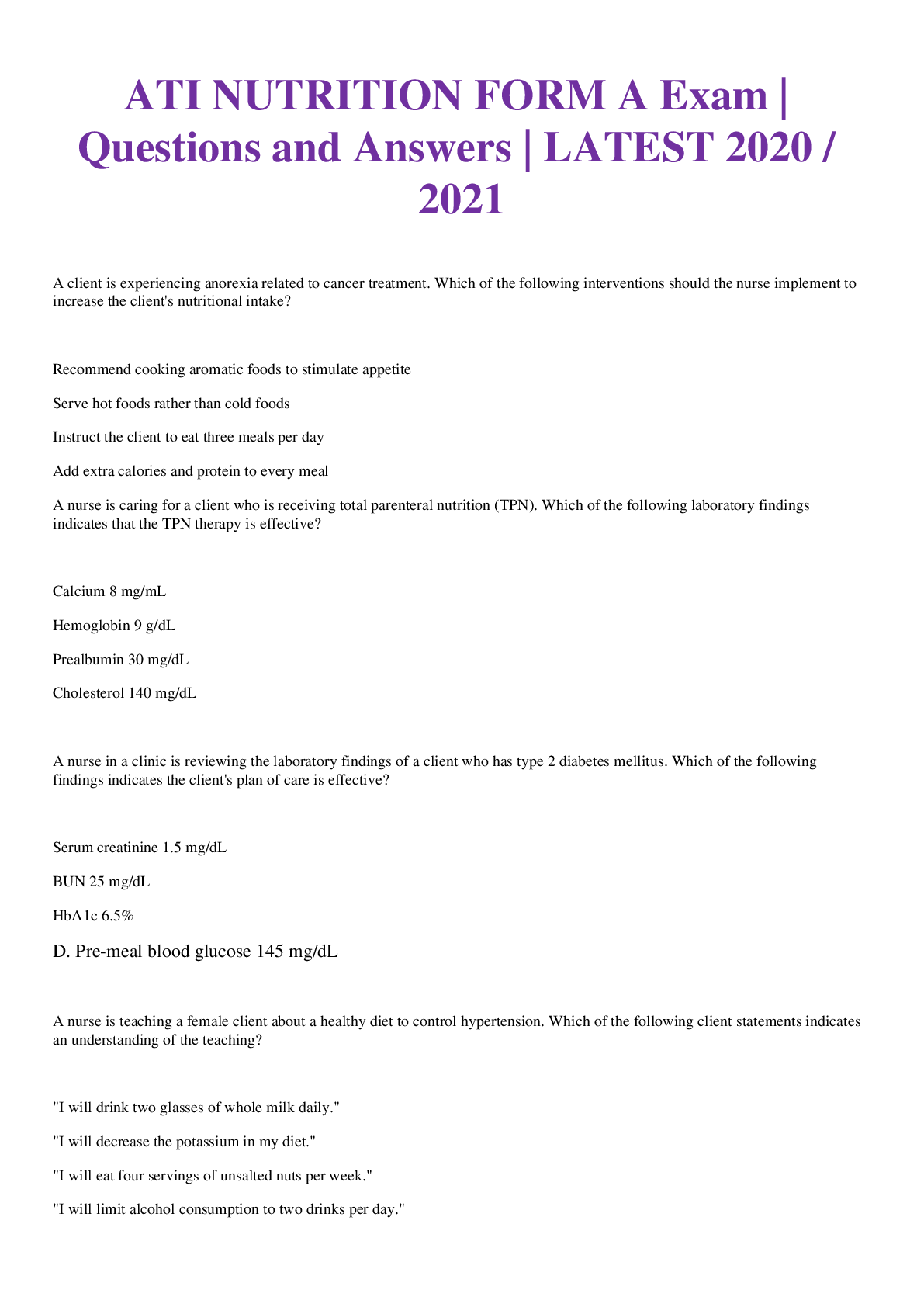*NURSING > EXAM > NRNP 6566 / NRNP6566 Advanced Care of Adults in Acute Settings I Week 8 Knowledge Check | Questions (All)
NRNP 6566 / NRNP6566 Advanced Care of Adults in Acute Settings I Week 8 Knowledge Check | Questions and Verified Answers | Latest 2020 / 2021
Document Content and Description Below
NRNP 6566 / NRNP6566 Advanced Care of Adults in Acute Settings I Week 8 Knowledge Check | Questions and Verified Answers | Latest 2020 / 2021 • Question 1 A 66 year old women in the ICU ... is diagnosed with delirium. What would be the best approach to treating her delirium? Correct Answer: Delirium is common in critically ill adults. Delirium is a clinical diagnosis which can be detected with some screening tools such as the Confusion Assessment Method for the ICU (CAM-ICU) or the Intensive Care Delirium Screening Checklist. Guidelines for the Prevention and Management of Pain, Agitation/Sedation, Delirium, Immobility, and Sleep Disruption in Adult Patients in the ICU (2018) by the Society of Critical Care Medicine recommends a muticomponent, nonpharmacologic intervention focused on reducing modifiable risk factors. These interventions include reorientation, cognitive stimulation, use of clocks, improved sleep, reduced sedation, early rehabilitation and mobilization, use of hearing aids and eye glasses. Haloperidol is not routinely recommended and studies have not shown that it shortens the duration of the delirium. However, short term use of haloperidol or an atypical antipsychotic may be warranted for those patients who experience significant distress, agitation, or physical risk to themselves or others. • Question 2 The NP is beginning to repair a laceration on a 22 year old female. The patient mentions that she is allergic to lidocaine. What medication would be an appropriate alternative for this patient? Correct Answer: Local anesthetics include two classes of medications that include esters and amides. Lidocaine and bupivacaine are amide anesthetics. In this patient, an ester anesthetics should be utilized. Procaine is an example of an ester local anesthetic. • Question 3 A 54 year old 112 kg women is admitted for incision and drainage of a left renal abscess. She needs TID wet to dry dressing changes that are very painful. She rates the pain during the dressing change as a 10 and describes in as sharp, pulling, and burning. Prior to the last dressing change she received 2 mg of morphine IV which was totally ineffective in relieving any pain of the dressing change. How would you manage the medication dosing prior to the next dressing change? Correct Answer: Recommended IV morphine dosing is 0.05 to 0.1 mg/ kg. Based on her weight, the recommend-ed dose would be 6-12 mg IV every 1-2 hours. Since 2 mg was ineffective, it would be reasonable to increase the next dose to 6 mg IV 20 minutes prior to the dressing change. Assess her response to this dose increase and determine if it is appropriate or another increase (add 2 mg) is needed to achieve pain relief during the dress-ing change. [Show More]
Last updated: 1 month ago
Preview 1 out of 3 pages
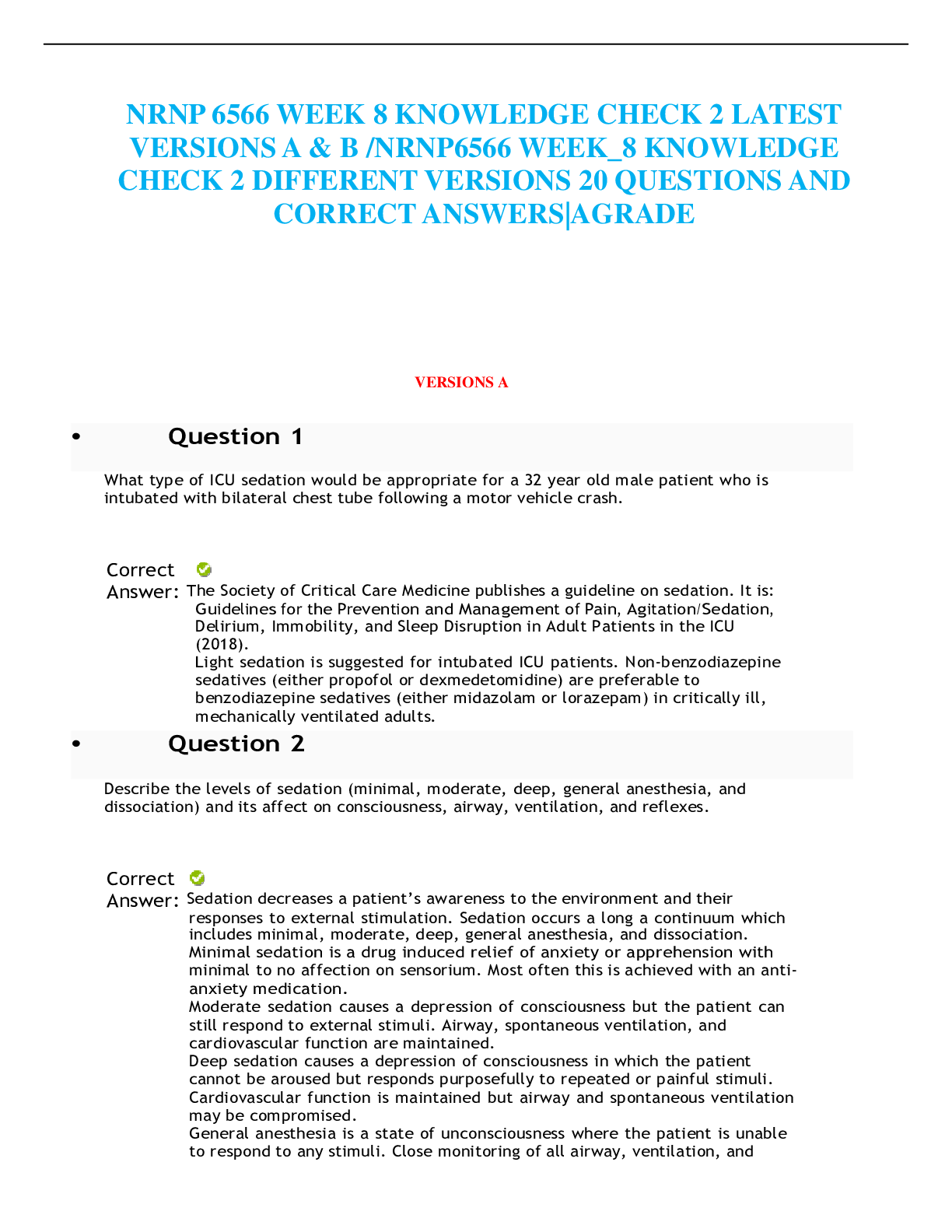
Reviews( 0 )
Document information
Connected school, study & course
About the document
Uploaded On
Dec 22, 2020
Number of pages
3
Written in
Additional information
This document has been written for:
Uploaded
Dec 22, 2020
Downloads
0
Views
57

